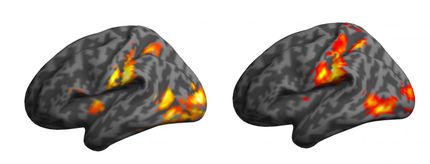Tarantula toxins offer key insights into neuroscience of pain
Researchers have identified a pair of tarantula toxins that target a previously unknown pain pathway in sensory nerves. The toxins, which researchers isolated from the venom of Heteroscodra maculata, a hand-sized West African tarantula commonly referred to as the "ornamental baboon" or "Togo starburst" tarantula, could be a powerful tool for developing new drugs to treat chronic pain -- and potentially epilepsy, autism, and Alzheimer's disease.
The study was led by researchers in the lab of David Julius, PhD, Chair of the Department of Physiology at UC San Francisco.
The researchers are excited about this finding for two equally important reasons: The newly discovered toxins cause pain by specifically triggering a type of sodium channel within a rare class of pain nerve called A-delta fibers, a discovery with the potential to open a new chapter in our understanding of pain, the researchers say. But these toxins also represent a broadly applicable tool for selectively manipulating this type of sodium channel, which is found throughout the nervous system and has been implicated in numerous neurological disorders unrelated to pain.
"It's a good problem to have," said Jeremiah Osteen, PhD, the postdoctoral fellow in Julius's group who led the research team. "We didn't know which of the two findings we should be more excited about."
Studying poisonous creatures reveals tools for pain, neurological research
Julius's lab -- which is renowned for the discovery and characterization of the so-called "wasabi receptor" -- has recently been working to identify new pain pathways by screening more than a hundred different venoms from poisonous spiders, scorpions, and centipedes -- sourced from the collection of co-author Glenn F. King, PhD, of the University of Queensland in Australia -- all of which have evolved chemical defenses that target the biology of animals' pain nerves.
"There are dozens to hundreds of different active peptides in each animal's venom," Julius said. "The deeper you look the more toxins there seem to be."
The Togo starburst tarantula's venom struck them as being particularly interesting because it appeared to activate a particular type of sodium channel within sensory nerves that was not a part of known pain pathways.
To identify which of the dozens of chemicals that made up the tarantula's venom were specifically targeting these channels, the researchers separated the venom and applied the components one-by-one to rodent sensory neurons in a lab dish. They found two peptide molecules that specifically and powerfully activated these sensory nerves, and experiments with lab-synthesized versions of the same molecules confirmed that these chemicals could activate pain-sensing neurons on their own.
Experiments with an array of different drugs that block candidate receptor molecules demonstrated that the two toxins specifically bind to and demonstrated that this particular receptor is indeed found on A-delta nerves in mice.
The accepted notion is that A-delta fibers may convey the sharp, immediate shock of a burn or a cut, ahead of the burning throb conveyed by slower C fibers. The newly discovered tarantula peptides allowed the researchers to isolate A-delta fibers in mice, and show that they also appear to play a role in touch hypersensitivity - when normally innocuous light touch causes discomfort -- a type of pain common to diseases like shingles and many chronic pain syndromes.
Additional experiments also implicated heightened touch sensitivity of Nav1.1-expressing nerves in a mouse model of irritable bowel syndrome, suggesting these nerves, and this channel, may play a role in the chronic discomfort such patients experience.
The pharmacological aspect of the research is also exciting for researchers because the nine subtly different voltage-sensitive sodium channels that are critical for nervous system function are extremely hard to manipulate individually. Researchers have been on a decades-long quest to find selective drugs for each subtype, so identifying two in one spider is a valuable find.
"These channels are incredibly hard to identify drugs for because the different subtypes are closely related, making it difficult to identify drugs or other agents that act on one subtype and not another," Julius said. "These toxins provide unique tools to start understanding exactly what this particular subtype, Nav1.1, does in terms of pain sensation."
The Nav1.1 subtype in particular has been implicated in the development of diseases including epilepsy, autism, and Alzheimer's disease, and the researchers hope that in addition to helping scientists understand the biology of pain, the new discovery will lead to the development of new drugs to target these diseases.
"These spiders had millions of years of evolution to come up with these potent and specific toxins," Osteen said. "They're tools one might be hard pressed to design as well in the lab."
























































